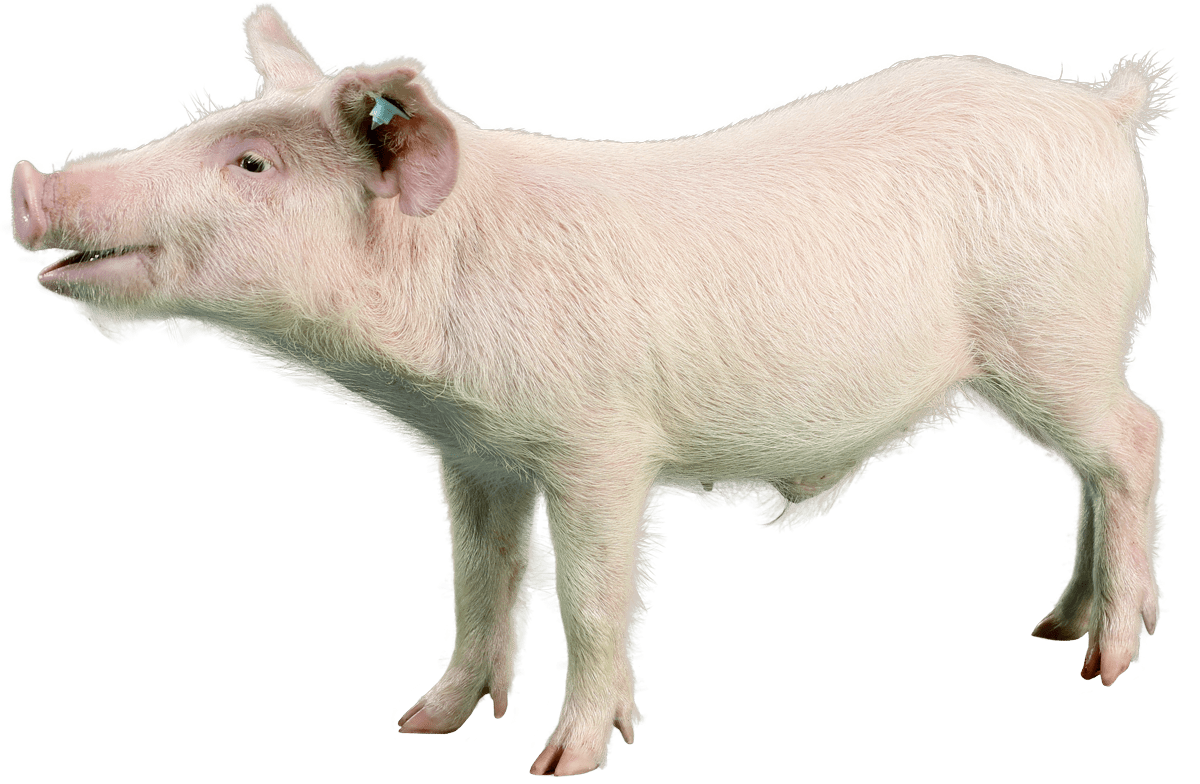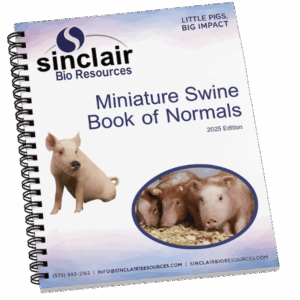
Background
-
- Hanford Labs started developing the Hanford miniature swine in 1958 in Richland, WA with two Palouse gilts and one Pittman-Moore boar; later addition of more Pittman-Moore and Swamp hog from Louisiana further reduced the size.
- Selection occurred at 140 days of age for fitness, skin and hair color, conformation, thickness of hair coat, and demeanor.
- Battelle Memorial Institute acquired the herd in the mid-1960’s and introduced Yucatan into the foundation stock.
- Charles River Laboratories assumed the breeding of the Hanford in 1982 at Wilmington, MA.
- The colony was moved to Pittsfield, NH in 1983.
- Sinclair Bio Resources acquired the Hanford herd in 2002 and moved the colony to Columbia, MO.
- The colony is closed and fully-pedigreed
Characteristics
-
- Well-adapted to the laboratory environment
- Looks like traditional farm pigs
- Used predominantly as a dermal toxicology model
- White skin and haircoat make them excellent for dermal studies
- Lack of fat makes them a good model for surgical studies
- Heart size and collateral blood flow very similar to human hearts makes them an excellent cardiovascular mode

